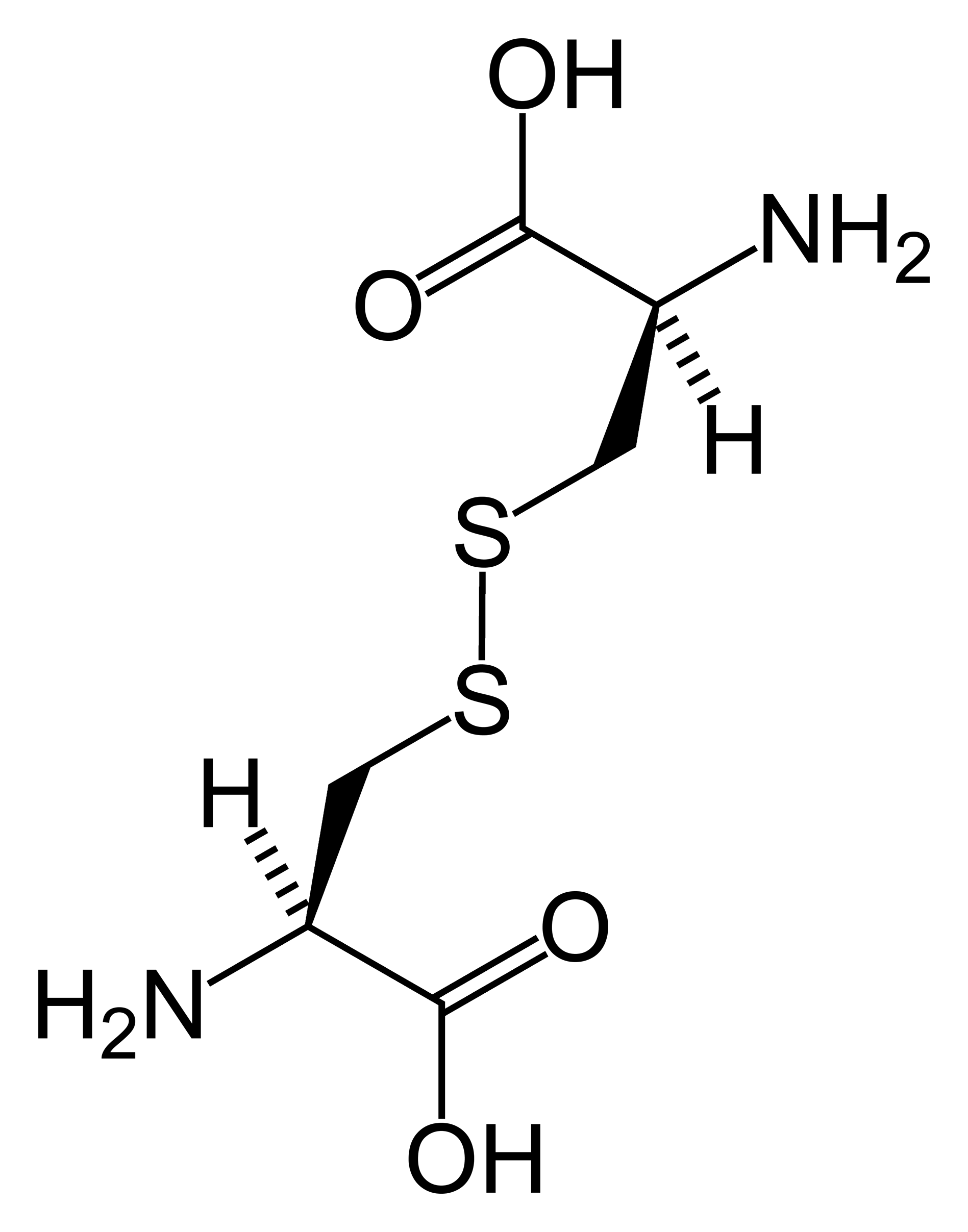Cystinosis
| Cystinosis | |
 | |
|---|---|
| Chemical structure of cystine formed from L-cysteine (under biological conditions) | |
| ICD-10 | E72.0 |
| ICD-9 | 270.0 |
| DiseasesDB | 3382 |
| eMedicine | ped/538 |
| MeSH | D003554 |
Template:Search infobox Editor-In-Chief: C. Michael Gibson, M.S., M.D. [1]
Please Take Over This Page and Apply to be Editor-In-Chief for this topic: There can be one or more than one Editor-In-Chief. You may also apply to be an Associate Editor-In-Chief of one of the subtopics below. Please mail us [2] to indicate your interest in serving either as an Editor-In-Chief of the entire topic or as an Associate Editor-In-Chief for a subtopic. Please be sure to attach your CV and or biographical sketch.
Cystinosis is a hereditary disorder of the renal tubules characterized by the presence of carbohydrates and amino acids in the urine, excessive urination, and low blood levels of potassium ions and phosphates. The body accumulates the amino acid cystine within cells. Excess cystine forms crystals that can build up and damage cells. These crystals negatively affect many systems in the body, especially the kidneys and eyes.
Cause
It is caused by abnormal transport of the amino acid cystine from lysosomes of all tissues, resulting in a massive intra-lysosomal cystine accumulation. Via an as yet unknown mechanism, lysosomal cystine appears to amplify apoptosis such that cells die inappropriately, leading to loss of renal epithelial cells, accounting for the renal Fanconi syndrome, and similar loss in other tissues can account for the short stature, retinopathy, and other features of the disease.
Symptoms
There are three distinct types of cystinosis each with slightly different symptoms: nephropathic cystinosis, intermediate cystinosis, and non-nephropathic or ocular cystinosis. Infants affected by nephropathic cystinosis initially exhibit poor growth and particular kidney problems (sometimes called renal Fanconi syndrome). The kidney problems lead to the loss of important minerals, salts, fluids, and other nutrients. The loss of nutrients not only impairs growth, but may result in soft, bowed bones (hypophosphatemic rickets), especially in the legs. The nutrient imbalances in the body lead to increased urination, thirst, dehydration, and abnormally acidic blood (acidosis). By about age two years, cystine crystals may be present in the cornea. The buildup of these crystals in the eye causes an increased sensitivity to light (photophobia). Untreated children will experience complete kidney failure by about age 10 years. Other signs and symptoms that may occur in untreated patients include muscle deterioration, blindness, inability to swallow, diabetes, and thyroid and nervous system problems.
The signs and symptoms of intermediate cystinosis are the same as nephropathic cystinosis, but they occur at a later age. Intermediate cystinosis typically begins to affect individuals from age 12 years to age 15 years. Malfunctioning kidneys and corneal crystals are the main initial features of this disorder. If intermediate cystinosis is left untreated, complete kidney failure will occur, but usually not until the late teens to mid twenties.
People with non-nephropathic or ocular cystinosis do not usually experience growth impairment or kidney malfunction. The only symptom is photophobia due to cystine crystals in the cornea.
It is currently being researched at UC San Diego, Tulane University School of Medicine, and at the National Institutes of Health in Bethesda, Maryland as well as at Robert Gordon University in Aberdeen and in Sunderland, UK.
Genetics
The cause of cystinosis is due to a mutation in the gene CTNS which codes for cystinosin, the lysosomal cystine transporter. Symptoms are first seen at about 3 to 18 months of age with profound polyuria (excessive urination), followed by poor growth, photophobia, and ultimately kidney failure by age 6 years in the nephropathic form. It is important for the child to see a biochemical geneticist and pediatric nephrologist to begin treatment with cysteamine as early as possible. Cysteamine decreases the amount of cystine stored in lysosomes and correlates with conservation of renal function and improved growth. Cysteamine eyedrops remove the cystine crystals in the cornea that can cause photophobia if left unchecked.
All forms of cystinosis (nephropathic, juvenile and ocular) are inherited as autosomal recessive traits, which means that there is a 25% recurrence risk to any couple who have had an affected child. The disease "breeds true" such that parents of a child with the juvenile variety of cystinosis will not have another child with the nephropathic form, etc. Cystinosis affects approximately 1 in 100,000 to 200,000 newborns. The incidence is higher in the province of Brittany, France, where the disorder affects 1 in 26,000 individuals.
Types
- Online Mendelian Inheritance in Man (OMIM) 219800 - Infantile nephropathic
- Online Mendelian Inheritance in Man (OMIM) 219900 - Adolescent nephropathic
- Online Mendelian Inheritance in Man (OMIM) 219750 - Adult nonnephropathic
See also
References
- Cystinosis at NLM Genetics Home Reference
External links
- BC Health Guide
- Cystinosis Foundation UK - a UK Charity Supporting Families & Research
Template:Endocrine, nutritional and metabolic pathology Template:SIB de:Cystinose nl:Cystinose